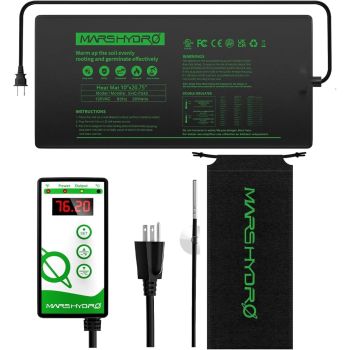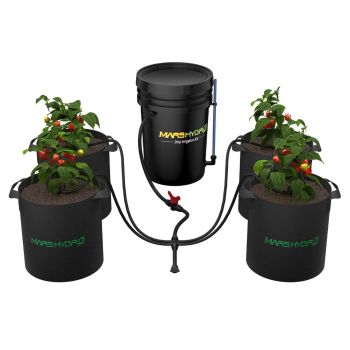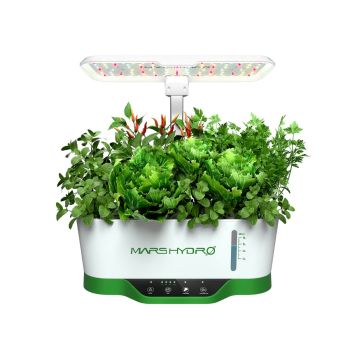
Plum tomatoes, with their rich flavor, firm texture, and culinary versatility, have long been a staple in gardens worldwide. These unique tomatoes are particularly popular for their elongated shape, concentrated sweetness, and lower seed content, making them ideal for sauces, stews, and preserving.
However, as winter approaches, these sun-loving plants face new challenges. The colder months demand special attention and care to ensure them not only survive but continue to thrive.
To grow lush plum tomatoes this winter, you’ll have to understand the following key factors:
- Challenfges of winter care
- Essential winter care tips
- Pruning and maintenance
- Harvesting and storing
Now, let’s dive into the details of how to successfully cultivate plum tomatoes during the winter season.
Table of Contents
Challenges of Winter Care
Winter brings with it specific challenges for growing plum tomato. The reduced sunlight, cooler temperatures, and the necessity of indoor growing environments can significantly impact their growth and yield. These conditions necessitate a shift in care techniques to ensure the plants remain healthy and productive.
While some gardeners may opt to keep their plum tomatoes outdoors with protective measures, indoor cultivation during winter offers distinct advantages. Indoors, you have better control over the environment, safeguarding the plants from extreme temperatures and unpredictable weather.
Essential Winter Care Tips
Temperature Management
Growing plum tomatoes indoors requires a consistent temperature range, ideally between 65-75°F (18-24°C) during the day, with slightly cooler temperatures at night. Our heat mats are exceptionally useful in this context, as they excel in maintaining this specific temperature range, which is crucial for the optimal growth of them.
The heat mat's consistent warmth not only aids in seed germination but also promotes faster and healthier root development, which is vital for growing strong and resilient plum tomato plants. This direct heating approach is both more efficient for plant growth and more energy-efficient than heating a whole room or greenhouse, leading to cost savings in the long run.
Our heat mats are also user-friendly, often coming with waterproofing and compatibility with thermostats for precise temperature management. This makes them a practical and effective tool for indoor plum tomato cultivation, ensuring the right temperature conditions are met for successful growth.
Light Requirements
For optimal growth of plum tomato indoors, adequate lighting is a key factor. It's recommended to supplement natural light with grow lights, ensuring that your tomatoes receive at least 8-10 hours of light per day. We offer a range of products that cater to these needs effectively.
Mars Hydro TS Series

-
Full Spectrum: The TS Series provides a full spectrum of light, crucial for mimicking natural sunlight. This is vital for supporting all tomato growth stages, from seedling to fruiting.
-
Energy Efficiency: Designed to be energy-efficient, these lights consume less power while providing high-intensity light, making them beneficial for fruit-bearing plants.
-
Even Light Distribution: With an even distribution of light, the TS Series reduces the risk of plant burn and ensures all parts of the tomato plants receive adequate light.
-
Quiet Operation: The no-fan design offers a quieter growing environment, ideal for indoor setups, and reduces the risk of mechanical failures.
Mars Hydro SP Series

-
Slim Design: Ideal for smaller spaces or grow tents, the SP Series's slim design makes it versatile for various indoor settings.
-
High-Efficiency Lighting: Beneficial for the growth of fruiting plants like tomatoes, this series provides efficient lighting solutions.
-
Deep Penetration: Excellent light penetration of the SP Series ensures that even lower parts of the plants receive sufficient light, crucial for plum tomatoes with dense foliage.
Mars Hydro HYDROLINE12
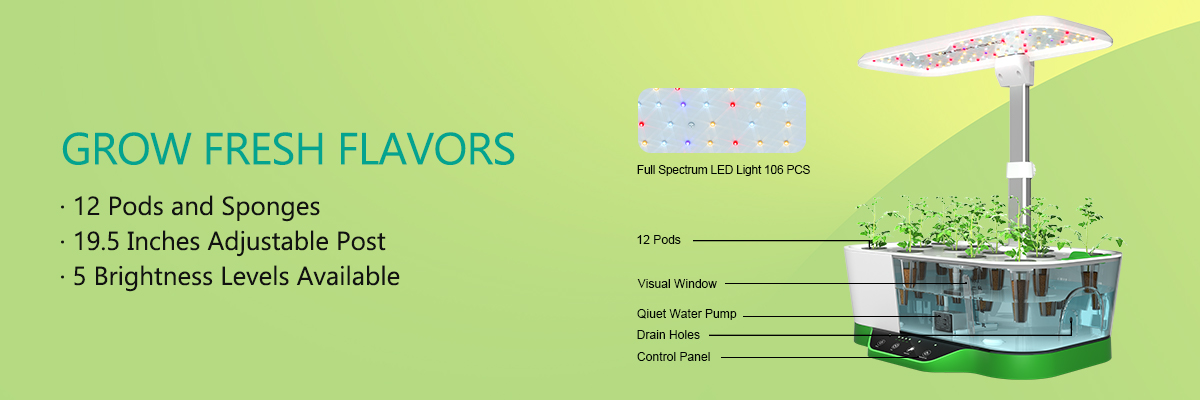
-
Efficient Lighting and Energy Use:Full-spectrum LED grow light with 24W power, supporting two growth modes and five dimming settings for precise growth control.
-
Enhanced Growth and Health:Promotes 20% faster growth than soil, with a system that optimizes root oxygenation.
-
Customizable Environment:Features an adjustable light post and auto timing schedules for environmental control.
-
Convenience and Reliability:Includes a power-off memory function for consistent operation post power interruptions.
Watering and Humidity
For the healthy growth of plum tomatoes, consistent and efficient watering is key, and a Mars Hydro drip irrigation system can be a game-changer in achieving this. Water your tomatoes when the soil feels dry to the touch, maintaining moderate humidity to mimic their natural growing conditions. The beauty of using a Mars Hydro drip irrigation system lies in its ability to deliver water directly to the roots of your plants. This method minimizes evaporation and runoff, making it a highly efficient way to maintain the right moisture levels.
The system automates the watering process, saving you time and effort as you no longer need to manually water the plants. With the drip irrigation delivering water evenly and consistently to the root zone, your plum tomatoes are less likely to suffer from diseases often caused by overhead watering. Moreover, Mars Hydro's kits can be customized to fit various garden layouts and plant needs, allowing you to adjust the flow rate to ensure each plant receives just the right amount of water.
This method of irrigation is not only ideal for maintaining the perfect moisture balance for your tomatoes but also conserves water – a boon for regions facing water scarcity or restrictions. Additionally, since the water is delivered directly to the plants, less of it is available for weeds, which can help in reducing weed growth. Over time, the efficiency and effectiveness of using a drip irrigation system like Mars Hydro's can lead to savings on water bills and plant replacement costs, making it a cost-effective and environmentally friendly choice for gardeners.
Soil and Fertilization

For healthy plum tomato plants, the right soil and fertilization practices are crucial. Opt for a well-draining soil mix, which prevents waterlogging and root rot. A mix rich in organic matter is ideal as it provides necessary nutrients and improves soil structure.
When it comes to fertilization, balance is key. Use a fertilizer with a balanced ratio of nitrogen, phosphorus, and potassium. Apply it according to the product's instructions, but be cautious not to over-fertilize. Excessive nitrogen, for instance, can lead to lush, green growth at the expense of fruit production. Regularly monitor your plants and adjust fertilization based on their growth and fruiting stages.
Pest and Disease Management
Regularly inspect your plants for signs of pests such as aphids, spider mites, and whiteflies. Use natural pest control methods like neem oil or insecticidal soap as a first line of defense. Diseases like blight or powdery mildew can be managed by ensuring good air circulation around the plants and keeping the foliage dry. Remove any affected leaves promptly to prevent the spread of disease. Keeping the growing area clean and free of debris also helps in reducing the risk of pest and disease infestations.
Pruning and Maintenance
Pruning is an essential aspect of caring for indoor plum tomatoes. It helps in managing the plant’s energy and resources more efficiently. Regularly prune to remove dead or yellowing leaves and to trim back excessively long branches. This encourages the plant to focus more on fruit production rather than vegetative growth. Providing adequate support with stakes or cages as the plants grow taller is also important to keep them upright and prevent damage to the stems.
Harvesting and Storing
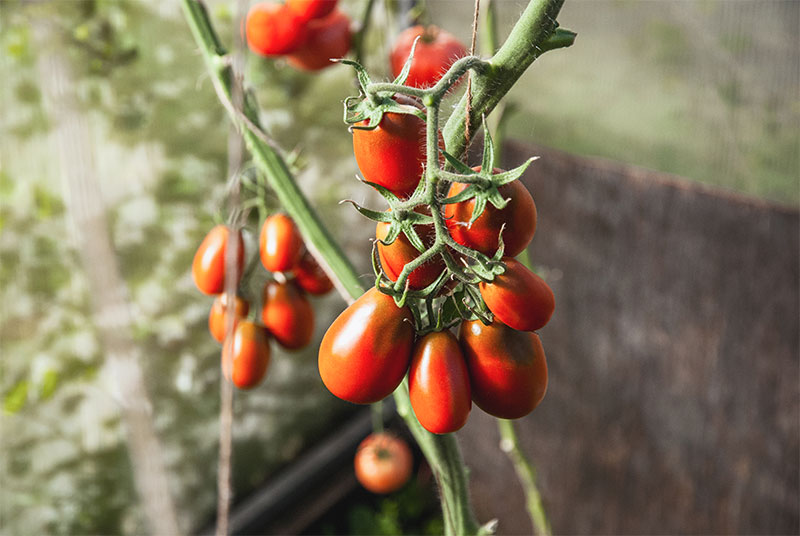
Harvesting plum tomatoes at the right time is key to enjoying their best flavor and texture. Pick them when they are fully colored and slightly soft to the touch. This indicates they are ripe and at peak taste.
For short-term use, store the harvested tomatoes at room temperature. If you need to store them for a longer period, place them in a cool, dark place. Avoid refrigeration as it can diminish their flavor and texture. Regularly check stored tomatoes and remove any that show signs of spoilage to prevent it from affecting the others.
Conclusion
With these tips and a little dedication, you can transform your indoor space into a productive winter tomato garden, enjoying the fruits of your labor and sharing your journey with fellow enthusiasts. Let this winter be a season of lush, flourishing plum tomatoes in your home!




